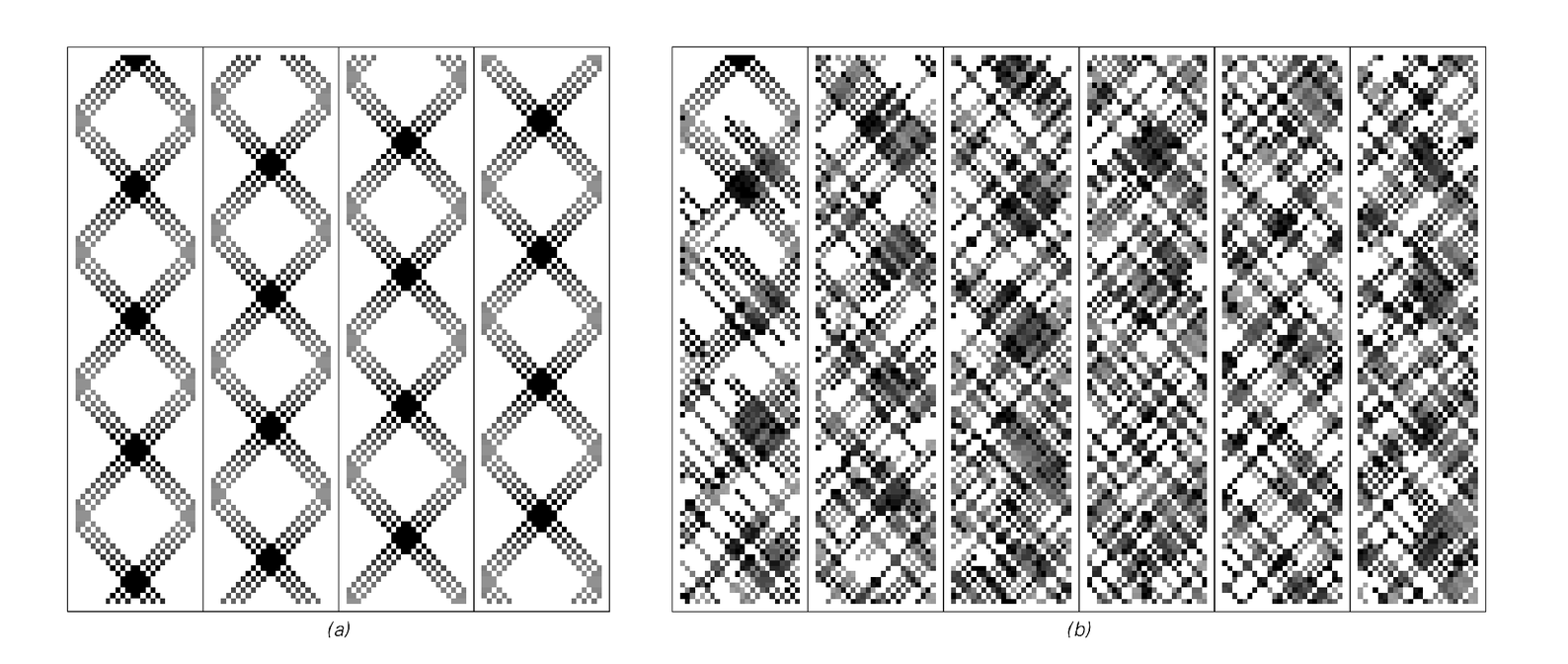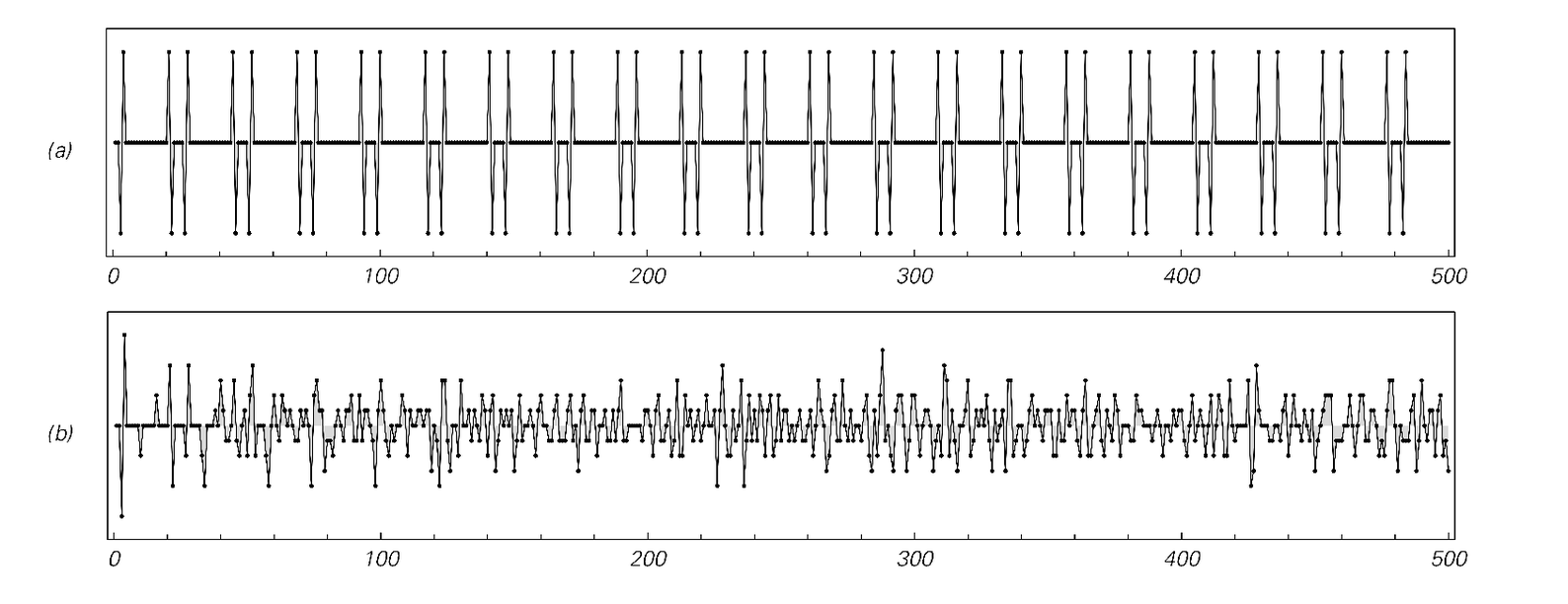The second set of pictures below show how such force might vary with time in cases (a) and (b) in the first set of pictures. In case (a), where no randomization occurs, the force can readily be predicted, and it is easy to imagine harnessing it to produce systematic mechanical work. But in case (b), the force quickly randomizes, and there is no obvious way to obtain systematic mechanical work from it.

Time histories of the cellular automata from the facing page. In each case a slice is taken through the midline of the box. Black cells that are further from the midline are shown in progressively lighter shades of gray. Case (a) corresponds to an empty square box, and shows simple repetitive behavior. Case (b) corresponds to a box containing a fixed obstacle, and in this case rapid randomization is seen. Each panel corresponds to 100 steps in the evolution of the system; the box is 24 cells across.

The force on an idealized paddle placed on the midline of the systems shown above. The force reflects an imbalance in the number of particles at each step arriving at the midline from above and below. In case (a) this imbalance is readily predictable. In case (b), however, it rapidly becomes for most practical purposes random. This randomness is essentially what makes it impossible to build a physical perpetual motion machine which continually turns heat into mechanical work.



